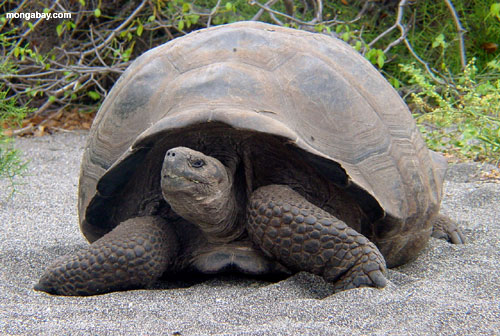1. If being flashy and colorful attracts predators, why do you think guppies are so colorful?
One reason that the guppies are so colorful is because the genes are passed done from past generations. The bright colors on the males also attract female guppies. The females are more drab and grey, which makes them less visible to their predators. The higher amounts of courtship the male guppy has, the more likely the chance they will be able to mate. Females preferred males with higher courtship rates.
2. After viewing the guppy gallery, pick the fish you find most interesting. What is the fish’s scientific name, origin and average size? Describe the coloration of the fish you chose.
The common name of the fish we chose was the Guppy or the millions fish. The scientific name of it is Poecilla Retriculata. The average size of it is 1.4 inches or 3.5 centimeters. The fish has an orange and black fin on its back and the back tail is a green. The main body of the fish has splotches of yellow and around it is a charcoal black. The lower fin, like the tail, is also green.
3. After viewing the predator gallery, pick the fish you find most interesting. What is the fish’s common name, scientific name, and origin?
The common name of the fish we chose was the Pike Cichlid. The scientific name is the Crenicichla Alta. The average size is 12 inches or 20 centimeters. The fish is mainly pink and it has different hues of the color. Some of the pink shades include, bubble gum pink, a purply pink, dark pink, etc.
4. View the guppy’s habitats, what habitat conditions would affect the predator populations?
Habitat conditions that could affect predator populations include natural rock dams, small pools, and open rivers. Guppies that live above small rock dams face a moderate amount of predators, while guppies that live above large rock dams enjoy little to no predators. Small pools of water can sustain small numbers of guppies, but are not deep enough for larger predators. The place where predators thrive are the large open rivers with lots of water and no hidden places.
5. Who is John Endler? What did he study and where did he study it?
He studied the evolution of guppies and how their colors affected them in Trinidad. DEGREES: B.A. in Zoology, honors with distinction, University of California, Berkeley, 1969. Ph.D. in Zoology, University of Edinburgh, Scotland, 1973. Worked with profs. Bryan C. Clarke, Douglas Falconer, and Alan Robertson (Clarke was my Ph.D. supervisor).
6. For each of the three stream areas, describe the guppy coloration
Pool 1: In pool 1, the guppies are extremely bright with multi-colored, large spots. There is a total of 75 guppies in Pool 1. There is also a total of 12 predators in the pool.
Pool 2: In pool 2, the guppies are medium coloration on the body and tail, with medium sized spots. There is a total of 83 guppies in Pool 2 and 22 predators as well.
Pool 3: In pool 3, the males have drab coloration and they have very small spots concentration near the tail. There is a total of 110 guppies Pool 3 and there are 42 predators as well.
7. Develop your own hypothesis about guppy coloration. The hypothesis should answer the questions: Why do guppies in different areas of the stream have difference in coloration? (You can choose from the list on the simulation, or make up your own)
Predators are causing guppy populations to become more drab by preying on the most brightly colored individuals.
8. Describe how predators influence guppy coloration.
Predators influence guppy coloration by eating the guppies that are easiest to find. By way of illustration, if the most vibrant guppies are the easiest to find, the population of the drabbest guppies will surpass the population of the most vibrant.
9. Was your hypothesis correct, use your data to justify your answer.
Our hypothesis was incorrect because the predators preyed mostly on the more drab fish. The brighter fish, overall, had the higher population throughout the whole simulation.
10. What does it mean that “male guppies live in a crossfire between their enemies and their would be mates”?
Male guppies live in a crossfire because if they are brightly coloured they attract the most mates but have a higher chance of getting eaten, but if they are dark coloured they have a harder time attracting mates, but have a lower chance of getting eaten.
11. Why do you think guppies in different areas of the stream have different coloration?
We think that there are different areas of the stream have different coloration because there are different populations in each area. Not every area has the same number of fish. There could be a different amount of drab and bright guppy fish in the area. Unless the fish move from the one area to another, than the population will not change.
12. What would happen to mostly drab guppies that were placed in a stream with very few predators?
If mostly drab guppies were placed in a stream with few predators, their population would would level out with the vibrant guppies.
13. What would happen to brightly colored guppies that were placed in a stream with many predators?
When the bright guppies with all of the predators, they did not survive. The population was only at 1%, but when they there with only two of the predators, 78% of the population of the brighest guppies survived with the Rivulus and Acara. When with just the rivulus, they were at 54%. For Trail 4, their population was 65%. For the bright colored guppies, the population was surprisingly lower. The population started at 14%, and than 22% and 1%. For Trail 4, the bright had the highest percent at 30%.
